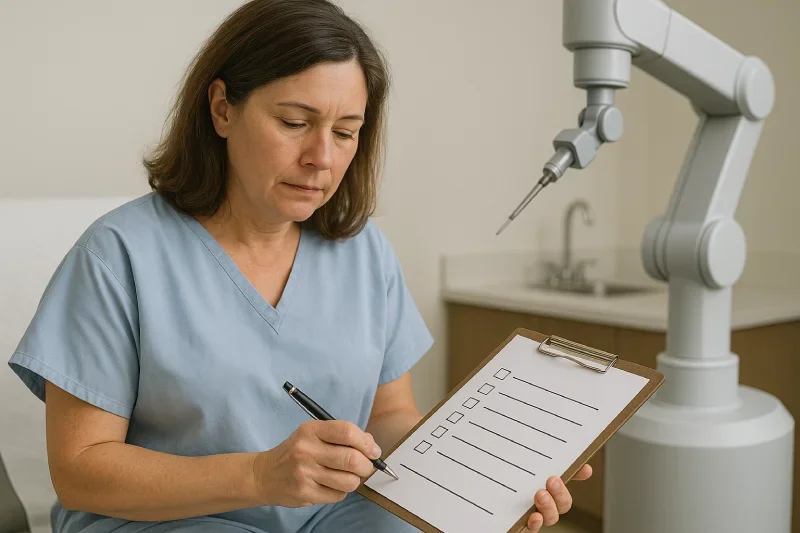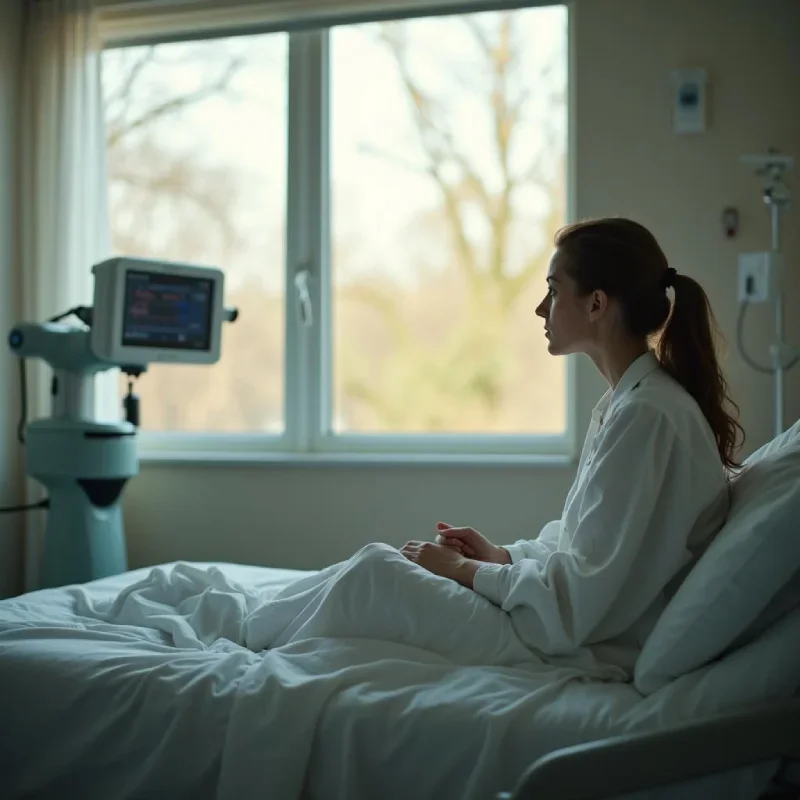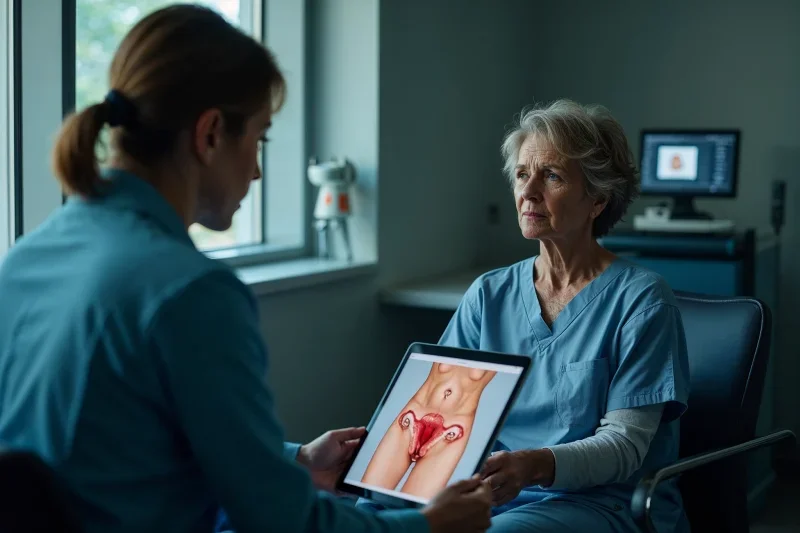Can I Reverse My Essure Procedure in Burleson, TX?
Categories:
By: Ethan Cole
Can I Reverse My Essure Procedure in Burleson, TX?
You’re reading this because the Essure device that once felt like the perfect method of sterilization no longer fits your life plan. Maybe pelvic pain, heavy bleeding, or an aching desire to get pregnant again has you wondering, “Can I reverse my Essure procedure in Burleson, TX 76028 without having a hysterectomy?”
The encouraging answer is yes—Essure reversal surgery is possible, especially when performed by a high-volume robotic surgeon like Dr. Jason W. Neef, MD, at Texas Health Huguley Hospital, 11797 South Fwy Suite 358, Burleson, TX. Still, the procedure involves resection of scarred tissue, microsurgical repair, and meticulous reconstruction of the remaining fallopian tube, so outcomes hinge on expertise, technology, and your unique anatomy.
Key Takeaways
Essure reversal in Burleson is achievable and safest when performed by a da Vinci-trained robotic surgeon.
Dr. Jason Neef, MD, operates at 11797 South Fwy Suite 358, Burleson, TX, and specializes in minimally invasive gynecological and reproductive procedures.
Robust consultation, advanced imaging, and microsurgical expertise are critical for restoring your fertility and minimizing ectopic pregnancy risk.
IVF remains a powerful backup plan when reversal isn’t possible.
Armed with accurate information and a surgeon you trust, you can move forward confidently—whether that means pain-free living, renewed fertility, or both.
Removal: Tackling Symptoms First
Essure removal is the first step for women whose primary goal is symptom relief. The coils are extracted intact through laparoscopic or da Vinci robotic surgery, minimizing large incisions and reducing recovery time to roughly 2 weeks. Removal alone can eliminate pelvic pain, coil migration, and autoimmune-type fatigue, but it will not restore fertility unless additional tubal surgery follows.
Essure Removal vs. Essure Reversal
Essure removal clears the device; Essure reversal goes further by reconnecting the tube to the uterus to make pregnancy possible. During reversal, your OB-GYN resects the scarred portion, then uses microsurgical sutures as thin as a strand of hair to anchor the remaining fallopian tube back into the uterine cornua.
The difference between the two procedures is huge—one simply ends discomfort, the other can restore your fertility.
Surgery Options in Burleson, TX
Dr. Jason Neef is one of only a few doctors nationally who combine fellowship-trained minimally invasive skills with reproductive microsurgery. His practice in Burleson offers three primary surgical options:
Robotic Essure Removal
Robotic Tubal Reversal Surgery
Complete Salpingectomy with subsequent IVF
Using the da Vinci robotic platform, Dr. Neef can magnify tiny fallopian vessels and perform 7-0 or 8-0 suturing that traditional laparoscopy often can’t match. Patients leave with 1-cm “keyhole” incisions and return to daily routines within days, fostering better overall health and wellness.
Jason Neef, MD: A Robotic OB-GYN You Can Trust
Credentials matter. Dr. Jason W. Neef, MD, is a board-certified OB-GYN whose résumé includes:
High-volume robotic Essure reversal surgery
Faculty teaching appointments that train other surgeons nationally
Surgical privileges at Texas Health Huguley Hospital, a facility equipped for women’s reproductive procedures
Robotic Essure Reversal Surgery: Step-by-Step
Incision & Access – Three to four 8 mm ports allow the robotic arms to enter the abdomen.
Coil Identification – A laparoscopic camera visualizes the Essure device and surrounding scar.
Cornual Resection – The scarred uterine portion is carefully excised; this type of surgery prevents further bleeding.
Tubal Re-implantation – The healthy tube is reinserted into the uterus using microsurgical techniques.
Leak Test – Dye is flushed to ensure patency.
Closure – 3-0 absorbable sutures repair the uterus; no large scars remain.
Because the procedure involves removing scar tissue and realigning delicate tubal segments, robotic precision helps reduce complication rates such as ectopic pregnancy and excessive bleeding.
Success Rates and Pregnancy Prospects
Published data place natural pregnancy rates after Essure reversal between 25% and 45%. Your individual odds rise when:
You’re under 38 with robust ovarian reserve
Post-operative tubal length exceeds 4 cm
Your partner’s sperm parameters are normal
Should reversal fail or be inadvisable, IVF offers 45%–60% success per fresh cycle in younger women. Many patients elect tubal reversal first because it allows multiple spontaneous pregnancy attempts without repeat medical costs.
Consultation: What to Expect
During your initial consultation, Dr. Neef’s team will:
Review operative reports from when the Essure procedure was done
Order a pelvic ultrasound and possibly an HSG to map tube length
Draw AMH, FSH, and estradiol labs to gauge fertility
Discuss recovery time (about 2 weeks off strenuous work) and potential risks
You’ll leave with a personalized roadmap outlining whether removal, reversal, or IVF aligns best with your family-building goals.
Recovery & Health and Wellness Tips
Day 1–3: Manage incision soreness with NSAIDs; light walking promotes blood flow.
Day 4–10: Gradual return to office duties; avoid lifting more than 10 lbs.
Week 3: Resume exercise; focus on core strength and pelvic floor health.
Month 3: Repeat HSG to confirm tubal patency before trying to get pregnant.
Adopt an anti-inflammatory diet rich in omega-3s, and consider prenatal vitamins to support fertility. Keep your OB-GYN informed of any unusual bleeding or pain.
Alternatives Without Having a Hysterectomy
Some women believe hysterectomy is their only escape from Essure-related misery. Not true. Robotic salpingectomy removes coils and fallopian tubes but leaves the uterus intact, allowing hormonal cycles to continue naturally. If you later pursue IVF, embryos can still implant in a healthy uterus, eliminating the need for a surrogate.
Book Your Essure Reversal Consultation Today!
Call (817) 568-8731Categories:
Frequently Asked Questions
-
Most women can attempt conception three months after surgery, once an HSG confirms both tubes are open. This window allows your uterus to heal fully and reduces the risk of uterine rupture or ectopic pregnancy. Early prenatal care is vital the moment you see a positive test.
-
Coverage varies. Many policies pay for Essure removal when documented symptoms exist but classify reversal as elective fertility treatment. Call the 800-number on your card or submit a pre-authorization letter. Dr. Neef’s office can provide CPT codes and medical records to strengthen your appeal.
-
Robotic arms filter tremor and offer 10-fold magnification, enhancing suture accuracy inside the narrow fallopian lumen. Clinical studies show shorter hospital stays, less postoperative pain, and comparable—or higher—patency rates compared with conventional laparoscopy when performed by an experienced surgeon.
-
If less than 4 cm remains, natural conception odds drop sharply. In such cases, Dr. Neef may recommend complete salpingectomy followed by IVF. Removing damaged tubes can actually improve IVF success by eliminating chronic inflammation that might impair embryo implantation.
-
Yes. Nickel-titanium coils can shift into the uterus or abdominal cavity even a decade later, causing pain or bowel adhesions. Imaging such as pelvic ultrasound or CT scan helps locate errant fragments so your surgeon can plan comprehensive removal.
-
Hypersensitivity to nickel is documented in a subset of patients, leading to rash, fatigue, or joint pain. Coil extraction often alleviates these symptoms. If you suspect allergy, patch testing can confirm nickel sensitivity, strengthening your case for insurance-covered removal.
-
Ectopic pregnancy occurs in roughly 5%–8% of post-reversal conceptions, higher than the baseline population risk. Early beta-hCG monitoring and a 6-week ultrasound help detect ectopics promptly, enabling medical or surgical intervention before complications arise.
-
Most patients have three or four incisions ranging from 8 mm to 12 mm—about the width of a pencil eraser. These minimally invasive entry points heal quickly and result in discreet scars often hidden below the bikini line.
-
Absolutely. Many women opt for concurrent laparoscopic endometriosis excision, ovarian cystectomy, or even robotic myomectomy. Combining procedures reduces overall anesthesia exposure and consolidates recovery into a single 2-week downtime period.
-
Maintain a healthy BMI, limit caffeine to 200 mg daily, and stop smoking—all shown to improve egg quality. Incorporate moderate exercise, manage stress through mindfulness, and ensure your partner undergoes a semen analysis. Together, these steps maximize your chance of a healthy pregnancy.













